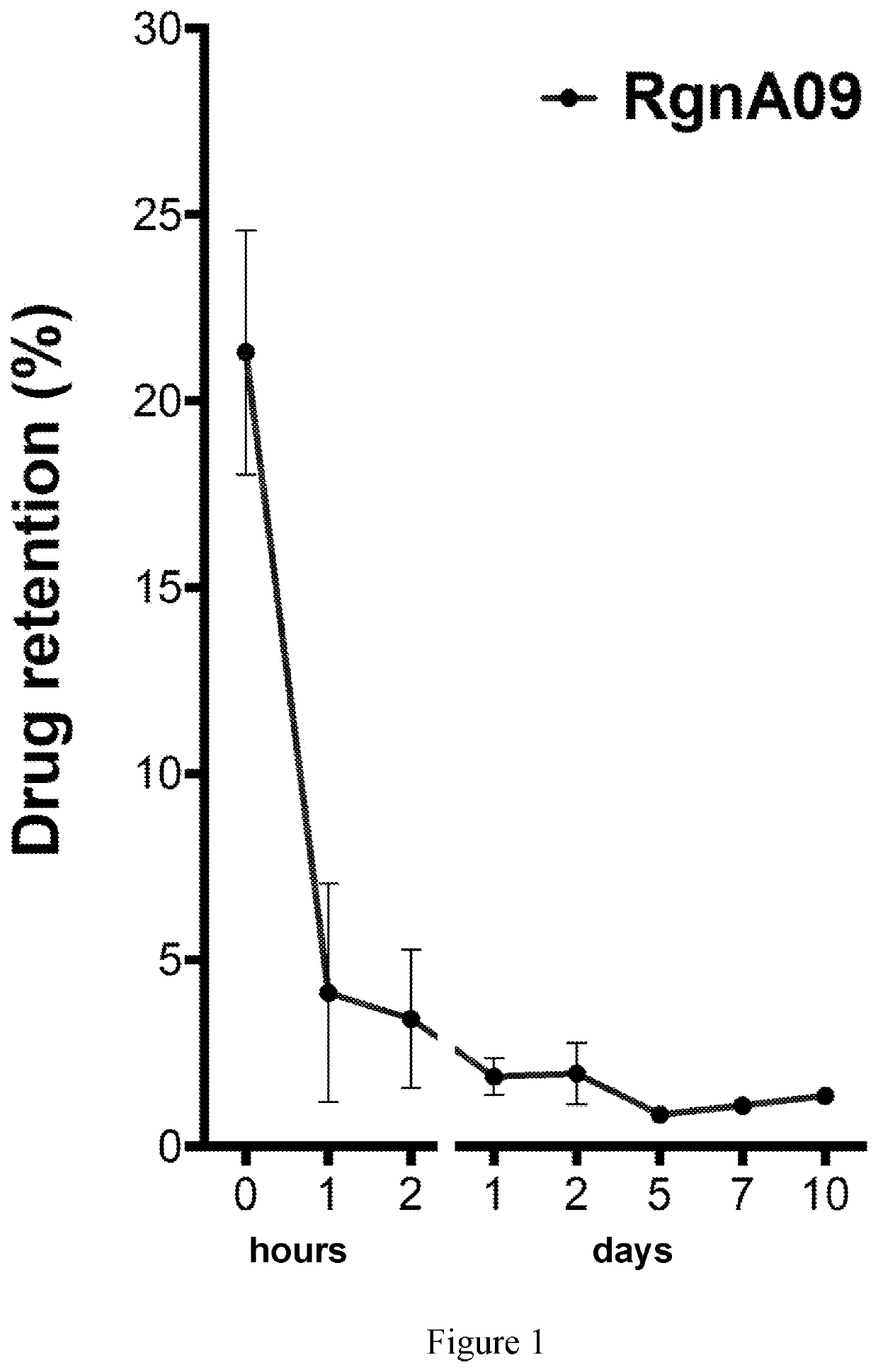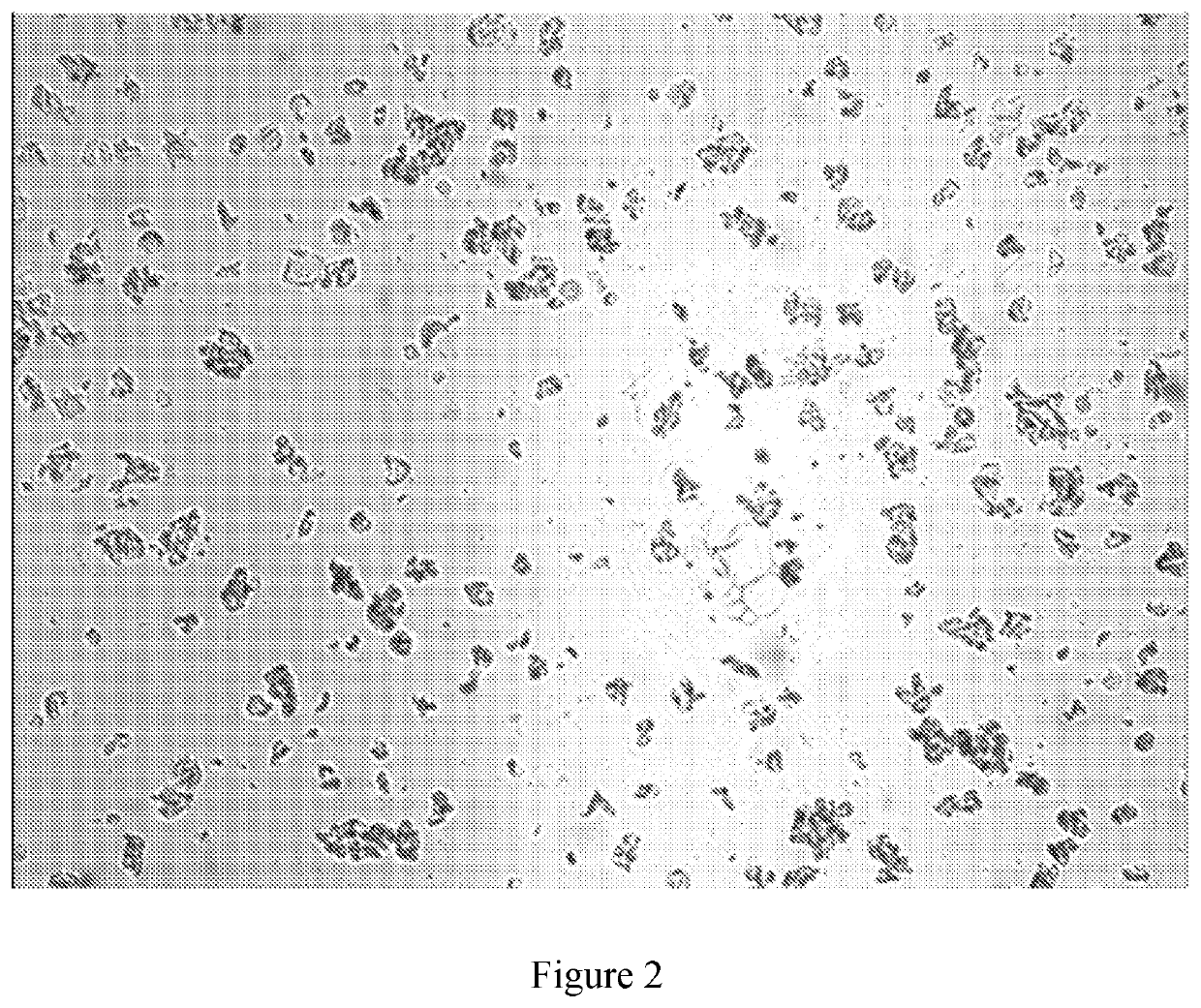Liposomes encapsulating adenosine
a technology of adenosine and liposomes, which is applied in the field of liposomes encapsulating adenosine, can solve the problems of not correcting the underlying problem, no restorative effect, and current treatment options that are less than optimal
- Summary
- Abstract
- Description
- Claims
- Application Information
AI Technical Summary
Benefits of technology
Problems solved by technology
Method used
Image
Examples
example 1
[0049]This example provides a description of liposomes of the present disclosure.
[0050]Because adenosine has a half-life of mere seconds, the liposomal-adenosine used for the above research was made fresh daily. A series of shelf-stable formulation options based on lipid constituents, solubility efficiency and retention properties were developed and evaluated. It was determined if cholesterol / stabilizing agents should be included, and optimized the variables. The percentage of liposomal-bound adenosine in the total formulation, which can be increased or reduced by reducing or increasing the amount of adenosine solution used to hydrate the fixed amount of pre-liposomal lyophilate, was measured. The fraction of adenosine versus (adenosine+lipid) in the resulting pellet of the liposomes that form from hydrating the pre-liposomal lyophilate with the adenosine solution is dependent on the concentration of adenosine in the solution not the volume used.
[0051]All formulations hydrated with ...
example 2
[0057]This example provides a description of liposomes of the present disclosure.
[0058]The laboratory formulations of liposomal-adenosine provided were analyzed using cross-polarized microscopy. These results are shown in FIG. 8.
[0059]The liposomal suspension, when observed microscopically, displayed evidence of significant crystalized adenosine. It is considered that this liposomal suspension may not contain significant liposomal content and is predominantly an emulsion. The spherical objects in the image are likely oil. The ingredients of this formulation contained a significant percentage (60%) of soybean oil, which would not be a component of a liposome formulation, but would be a component of an emulsion.
[0060]The solubility of adenosine in water was considered, which is 7 mg / mL. The laboratory formulation required 300 mg of adenosine to be added to 10 mL of saline. Presumably, only 70 mg of the adenosine would dissolve, leaving 230 mg of adenosine in crystalline form. It is co...
example 3
[0071]This example provides a description of methods of use of injectable formulations of the present disclosure.
[0072]Rats with established OA received an intra-articular injection of saline (100 μL) and other 8 groups of animals received Ade in 2 different liposomal formulations at the doses of, 3, 1, 0.3 and 0 mg / mL. The first injection was performed 4 weeks after the ACL rupture. Animals received one injection every 10 days, 6 times. Knee swelling was measured before every injection as a measure of articular inflammation. Pain test was performed in rats at baseline (before the first injection), 5 days after the 3rd injection and finally at 57 days, right before sacrifice (7 days after the last injection). Post-sacrifice joints was analyzed using histology and uCT.
[0073]10 Treatment Groups[0074]2 formulations×4 doses=8 treatment groups[0075]1 positive control (Rgn01)[0076]1 negative control (saline)
[0077]RgnA01 was prepared as described in Corciulo et al., Endogenous adenosine ma...
PUM
| Property | Measurement | Unit |
|---|---|---|
| concentration | aaaaa | aaaaa |
| concentration | aaaaa | aaaaa |
| concentration | aaaaa | aaaaa |
Abstract
Description
Claims
Application Information
 Login to View More
Login to View More - R&D
- Intellectual Property
- Life Sciences
- Materials
- Tech Scout
- Unparalleled Data Quality
- Higher Quality Content
- 60% Fewer Hallucinations
Browse by: Latest US Patents, China's latest patents, Technical Efficacy Thesaurus, Application Domain, Technology Topic, Popular Technical Reports.
© 2025 PatSnap. All rights reserved.Legal|Privacy policy|Modern Slavery Act Transparency Statement|Sitemap|About US| Contact US: help@patsnap.com



